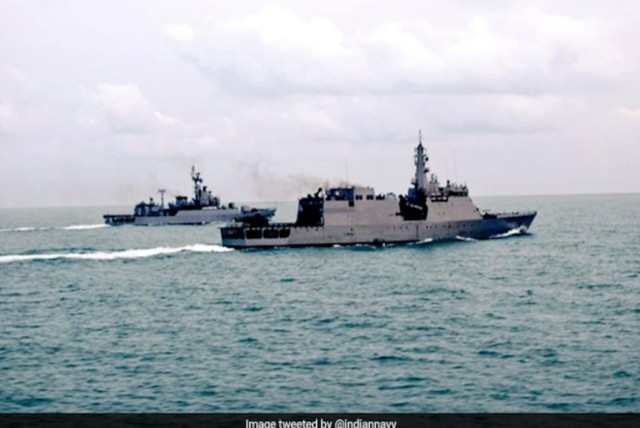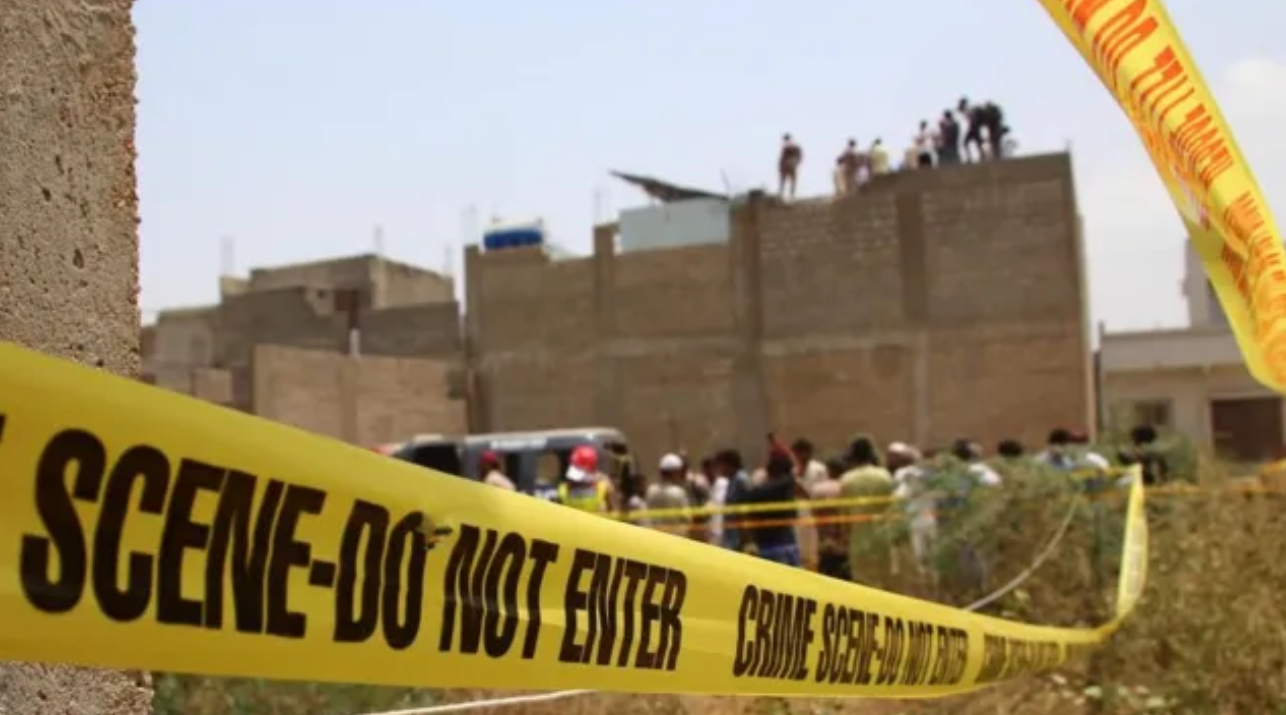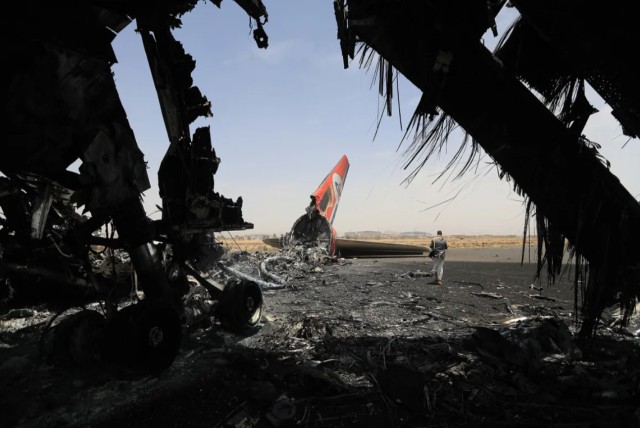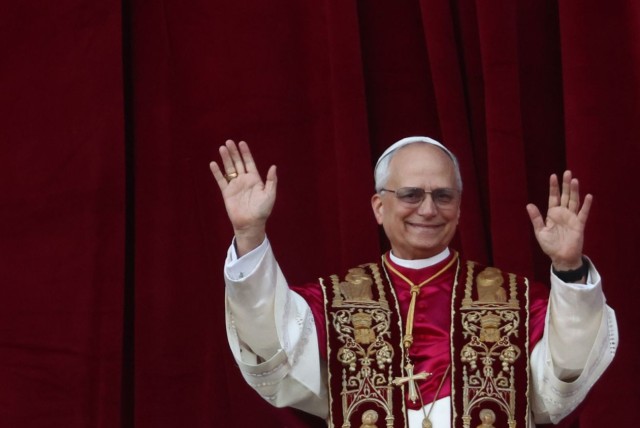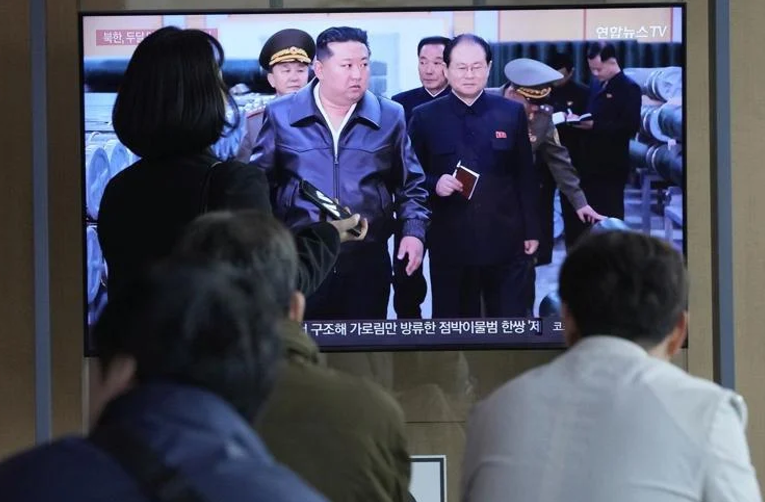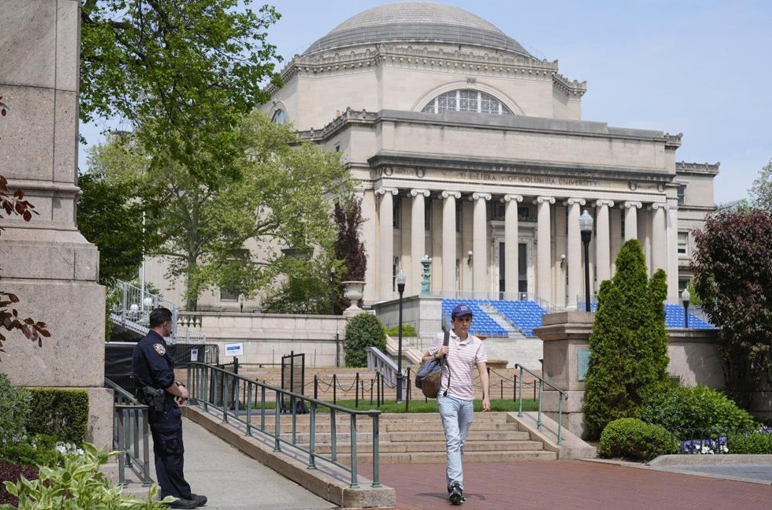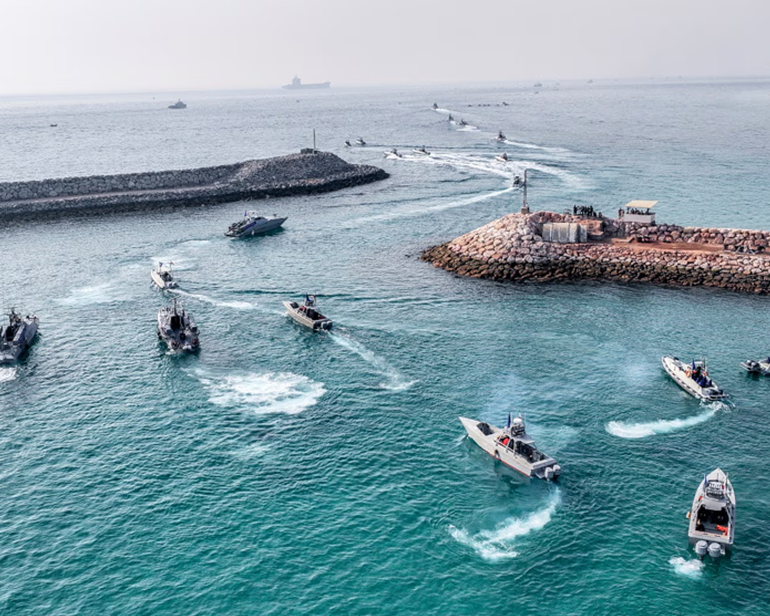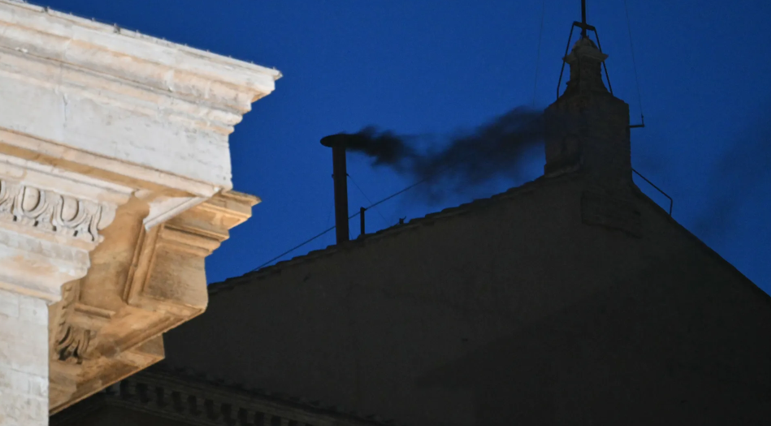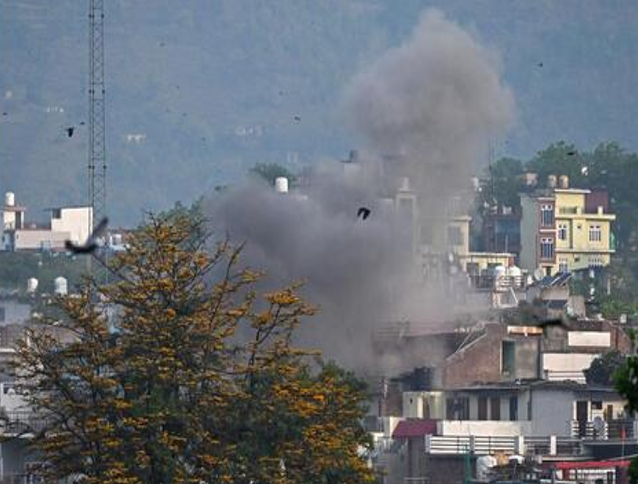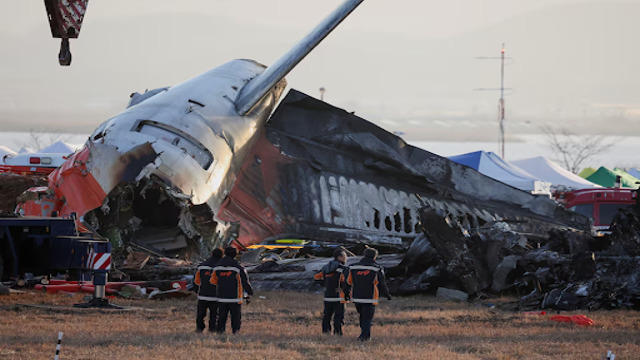
Firefighters examine the wreckage of the aircraft that crashed after veering off the runway at Muan International Airport in Muan, South Korea, on December 31, 2024. Reuters
Efforts to determine the cause of South Korea’s deadliest domestic air disaster intensified on Tuesday as authorities worked to identify victims and respond to grieving families demanding answers. The tragedy occurred when a Jeju Air Boeing 737-800 crash-landed at Muan International Airport, killing 175 passengers and four out of six crew members. Two crew members survived the fiery crash.
The National Police Agency has mobilized additional personnel and rapid DNA technology to expedite the identification of the five remaining unidentified victims. Families gathered at the crash site have urged authorities to speed up the process and provide more transparency.
The plane belly-landed, skidded off the runway, and collided with a concrete embankment, erupting into flames. The crash left the aircraft mostly disintegrated and scattered body parts across nearby fields. Acting President Choi Sang-mok has since ordered an emergency safety review of all airline operations in the country.
A flight recorder recovered from the crash site was found to be missing a critical connector. Investigators are exploring ways to retrieve its data, which could shed light on the incident.
South Korea’s Transportation Ministry announced a thorough inspection of all 101 Boeing 737-800 planes in operation by South Korean airlines, expected to be completed by January 3. Meanwhile, Muan International Airport will remain closed until January 7 as investigations continue.
The wreckage of the Jeju Air plane that crashed after going off the runway rests near skid marks at Muan International Airport in Muan, South Korea, on December 30, 2024. Reuters
The U.S. National Transportation Safety Board (NTSB), Federal Aviation Administration, and Boeing have joined the investigation. NTSB Chair Jennifer Homendy stated that additional experts could be deployed if needed.
Investigators are examining potential causes, including bird strikes, equipment malfunctions, and the pilots’ decision to attempt a landing soon after declaring an emergency. Attention has also turned to the airport’s design, particularly the dirt-and-concrete embankment at the runway’s end.
The embankment, used to support navigation equipment, was struck by the aircraft at high speed, triggering the fireball. Experts have criticized its placement, arguing that it violates industry safety standards.
Captain Ross “Rusty” Aimer, CEO of Aero Consulting Experts, stated, "Unfortunately, that thing was the reason that everybody got killed because they literally hit a concrete structure. It shouldn’t have been there."
As the sun rises, it casts light on the debris and wreckage of the aircraft that crashed after veering off the runway at Muan International Airport in Muan, South Korea, on December 31, 2024. Reuters
Transport Ministry officials defended the embankment’s placement, citing compliance with International Civil Aviation Organization guidelines. However, the ministry acknowledged potential regulatory conflicts and pledged to reassess airport safety standards.
John Cox, CEO of Safety Operating Systems, criticized the runway’s design, noting that industry best practices prohibit hard structures within 300 meters of a runway’s end. Satellite imagery analysis suggests the embankment was positioned less than half that distance.
Video footage shows the aircraft slowing and seemingly under control before hitting the embankment. Aviation experts agree that the crash’s severity was exacerbated by the design of the airport’s safety zone.
As South Korea grapples with the aftermath of this devastating accident, the focus remains on identifying victims, uncovering the crash’s causes, and ensuring that such a tragedy is never repeated.



